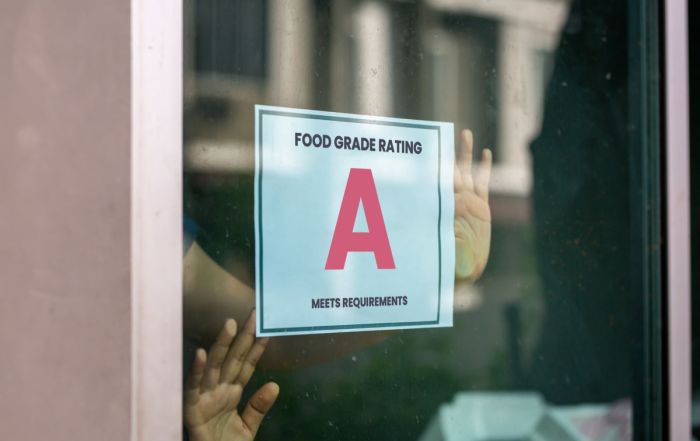The Politics of Food Safety – Part Two
Hi everyone. Keeping with the theme of politics, our blog postings for the month of November are about food safety regulations. In the first blog, we provided background on agencies and their oversight for different foods. In this blog, we are covering elements of the Food Safety Modernization Act (FSMA) that was signed into law January of 2011.
FSMA was heralded as significant food safety legislation as it enhanced and expanded regulatory oversight. FSMA consists of Seven Rules: Preventative Controls for Human and Animal Foods; Produce Safety Rule; Foreign Supplier Verification Programs; Accreditation of Third-Party Auditors/Certification Bodies; Sanitary Transportation of Human and Animal Food; and Prevention of Intentional Contamination/Adulteration.
Most of these Rules affected production, processing, and transportation links of the food chain. While foodservices were not directly involved, you may have noted an uptick in fees or additional charges as implementation steps occurred for your suppliers.
However, for foodservices purchasing direct from local food producers, the Preventative Controls for Human Food (PC) and the Produce Safety Rule (PSR) may be familiar! The PC for Human Food requires facilities to be registered and a representative to attend an approved training program. This is similar for producers that must comply with the PSR. There are lists of approved trainings available from cooperative extension offices, state agriculture agencies, and FDA’s Regional Centers for FSMA (disclosure: I was involved with the North Central Regional [NCR] Center for FSMA compliance during the later years of my career at Iowa State University).
The PSR was significant because it was the first ever, mandatory federal standard for growing, harvesting, packing, and holding of fresh produce. The Rule established science-based minimum standards for the safe growing, harvesting, packing, and holding of covered fruits and vegetables grown for human consumption on a “farm”. Establishing the definition of what is a farm was quite a contentious process: “A primary production farm is an operation under one management in one general (but not necessarily contiguous) physical location devoted to the growing of crops, the harvesting of crops, the raising of animals (including seafood), or any combination of these activities”. So a produce grower who has a few acres of fruits and vegetables along with several hundred acres of corn or soybeans that will end up in food production, must comply with the PSR as the threshold of annual revenue from “the farm” is higher than the minimum for exemption.
The PSR established metrics for good agricultural practices (GAPs). The metrics include required testing for water (although details are still in flux) and documentation that controls to prevent risk from biological soil amendments, animals and wildlife, poor worker practices, and equipment and facilities are maintained. In general, the focus is on the environmental and human potential risks for contamination of produce, necessary because fresh produce doesn’t receive a kill step (cooking) before the food is served. The PSR identified a list of produce items rarely consumed raw; producers of these crops, such as sweet corn, are exempt from compliance with the Rule.
The PSR also allows exemption if average annual food sales to ‘qualified end users’ are below the threshold. A flow chart to determine whether the grower must comply with the PSR is available from FDA and from the NCR.
What struck me as I qualified as a Lead Trainer for the PSR curriculum, was that many of the new requirements formalized GAPs. Even if a grower is exempt from meeting the PSR, a buyer should be asking questions related to safety of the water used to irrigate and wash produce as well as practices to control from worker contamination of fruits and vegetables due to illness or poor hygiene practices. In foodservices, we know people shouldn’t work around food if they have certain symptoms or illnesses, but what about on the farm? A checklist to use when purchasing from local growers should be used if there is no regulatory oversight as this demonstrates the foodservice’s due diligence in ensuring the food is safe when it arrives at the operation. Direct purchasing can be a win-win as it supports local growers and allows the foodservice to showcase regional foods.
Effective procurement of food for retail operations depends on asking the right questions to ensure the right product is delivered at the right time for the right price. Knowing some of the regulations that form the first chapters in the story of food served in your operation can be helpful. The public trusts that most foods sold receive some level of oversight. That oversight may come from federal or state sources, or it may come from the foodservice. The goal is to protect the public’s health and the reputation of your foodservice. Risk Nothing!
If you have any questions or comments about food safety, please email our food safety experts at foodsafety@foodhandler.com
READ MORE POSTS
Embracing Technology for Enhanced Food Safety in Foodservice Operations
Technology. We love it, we hate it. I’ve always been fascinated by technology; I remember getting my first Blackberry in the mid-90s and thinking it was the pinnacle of technological advances. Before that, I remember ordering a dictation program in college that was going to revolutionize the way I “typed” my assignments. Looking back, it really wasn’t worth the box that the program came in. Now, we have ChatGPT that will write the entire paper for us!
Meat Color and Doneness: Persistent Pinking
Late in June, my family and I were able to visit the Black Hills, an area of the country in which I have not had the opportunity to spend much time. One evening, as we dined at a local restaurant, I observed a table across the dining room sending back a dinner. While I couldn’t hear the entire conversation and I certainly wasn’t trying to eavesdrop, it was apparent that the customer was unhappy with the cooking of their hamburger and was sending it back because it was too pink in the middle. That immediately brought to my mind the phenomenon known as persistent pinking. A term I became familiar with because of work done by some colleagues here at Kansas State, which they present each summer to a group of foodservice operators who join us on-campus for an in-depth week-long look at all things food safety.
Quat Binding – Why this Can Have a Disastrous Impact on Your Sanitation Program.
In June, I had the opportunity to represent FoodHandler and speak on food safety behavior for customers of Martin Bros. Distributing in Waterloo, Iowa. One of the questions that was asked caught me a little off guard. The question was about quat binding. It caught me off guard not because it was a bad question, but only because it was not something I had previously been asked nor had not yet been exposed to the phenomenon. However, I soon learned that in certain jurisdictions, it is resulting in changes to how sanitizing cloths are to be stored in sanitizing buckets (or not) in the foodservice industry. When I returned home from the trip, I had to dig into it to learn about what quat binding is and how it might impact foodservice operations.
Are Grades for Foodservice Inspections a Good Idea?
I generally try to stay away from controversial topics in my blog, but this is one I thought it might be interesting to discuss. Occasionally on my travels, I will come across a state or a local jurisdiction that requires foodservice inspection scores be posted in the window of the establishment. The idea is to allow would-be customers the ability to see how the foodservice operation in which they are about to eat scored on their latest health inspection.











